By Eduardo Gimenez, CEO; Len Kaster, PE, CFPE, technical sales support; Madeline Hanley, technical marketing and sales; ALA Industries
The United States is a leader in wind energy — wind generates 7% of the electricity Americans use. But it’s still behind the Europe Union, which receives 12% of its electricity generation from wind turbines. The two markets also show differences in O&M, something that should not be ignored in the still growing American industry.
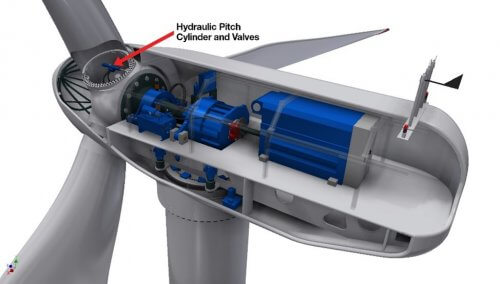 Blade maintenance is continuously being refined as a fine science, but one of the largest issues is the difficulty in controlling pitch. A sophisticated pitch control system with three high-speed proportional valves accounts for up to 23% of all downtime on wind turbines, more than any other component or subsystem. Pitch control valves independently change each blade’s angle facing the wind, sometimes as often as 10 or 20 times a second, based on incoming signals from a main controller on the wind turbine. These signals are a result of the wind conditions that the turbine is experiencing at a given time. Much like the rest of the turbine, the pitch control valve’s performance and lifetime are affected by the weather conditions around it.
Blade maintenance is continuously being refined as a fine science, but one of the largest issues is the difficulty in controlling pitch. A sophisticated pitch control system with three high-speed proportional valves accounts for up to 23% of all downtime on wind turbines, more than any other component or subsystem. Pitch control valves independently change each blade’s angle facing the wind, sometimes as often as 10 or 20 times a second, based on incoming signals from a main controller on the wind turbine. These signals are a result of the wind conditions that the turbine is experiencing at a given time. Much like the rest of the turbine, the pitch control valve’s performance and lifetime are affected by the weather conditions around it.
Modern wind turbine energy systems were developed in an industrial scale in Europe, and pitch control subsystems were developed for those unique conditions. These valves need to be replaced three to five times over a wind turbine’s lifetime in Europe, which equates to a five- to 10-year expected lifespan. When the same highly developed European technologies were introduced into the United States around 2007, pitch control valve life was noted to be remarkably shorter than was common in Europe. Valve failures were much more frequent in North America.
European manufacturers dominated in the United States until General Electric jumped into the fray with its own technologies, including a different way to address pitch control using electric — instead of hydraulic — devices. No matter which pitch control technology is used, America’s high winds keep pushing products into higher performance and longer life.
It became abundantly clear to wind project owners that normal American wind conditions were very destructive to pitch control valves. When analyzing wind conditions, tornadoes are at the apex, with 100- to 150-mph winds concentrated over small areas. Tornadoes are common in the United States but relatively uncommon elsewhere. Winds in these storm cells can gust at 90 mph over long periods of time and large distances, before reaching tornadic form and intensity. High, variable wind speeds create intense vibrations especially in the blades that feather by design at 55 mph.
Feathered blades in 90-mph winds vibrate violently, resulting in acceleration forces as high as 20 G’s. Valves in European windfarms seldom experience such extreme conditions that are so common throughout the United States. Extreme vibration destroys the delicate balance that exists in any normal proportional valves. The manifold and valves are not in a sealed environment; therefore, they sense the effects of hail, rain, sleet and snow. A few valve manufacturers have addressed these issues — one U.S. company doubled up with a pilot valve, adding power and structural strength. A major Asian manufacturer addressed the same problems by ruggedizing the exterior and strengthening the interior of the valve. Both valves have been successful in addressing the shortened valve life due to vibration. The Asian manufacturer has successfully replaced nearly 4,000 failed valves installed in American wind farms, beginning in 2014.
The cost of pitch control valve failures is very high. Nearly one-quarter of all downtime in the industry is attributable to this form of failure. It is expensive for a wind turbine to go off-line for days or weeks. Sending a crew up the nacelle is also expensive. The cost of the valve itself is nearly irrelevant in the overall downtime cost. If this one aspect of O&M represents nearly 25% of all downtime experienced by the industry, its reduction is the highest priority for most owners and O&M crews.
Maintenance costs have to be reduced. Components of the turbine, such as the pitch control valve, need to be reliable and easily installed. “Plug and play” components will provide simple operation and user-friendliness. “Plug and play” for pitch control valves means the valve can be mechanically mounted and bolted down in the same location as the valve it replaces, as well accepting the same electrical plug with the same pin pattern for power and input signals. The replacing valve must be equal in form, fit and function as the originally installed valve. In addition:
Response Characteristics: A closed loop structure provided by incorporating a differential transformer for spool position detection enables feedback control, achieving high response equivalent to a simple servo valve.
High Accuracy: The valve has a hysteresis of 0.1% or less, achieving high accuracy equivalent to that of servo valves. The 2% overlap type with linear no-load flow characteristics suitable for position and pressure control in machinery equipment.
Safety and Reliability: The valves support a fail-safe function to ensure safe operation in the event of electrical failure. Electrical failures can include power failure, power cable disconnection, etc. Also, with a proportional valve of this magnitude, feedback of the valve’s performance can be monitored by the wind turbine owner or technicians. Steps have also been taken to reinforce the interior and exterior of the pitch control valve in order to provide an extended lifetime for the valve. By doing so, the valve can keep up with severe wind conditions that U.S. wind turbine owners experience.
Overall, with the current short life span of wind turbines, replacement components within them must be constructed to combat the O&M costs placed upon owners. These components, such as the pitch control valve, must also be designed to withstand the harsh weather conditions that come with residing in the United States. The objective for the ruggedized pitch valve is to diminish failure rates and add to the lifetime and reduced O&M costs of the wind turbines. Windfarm owners should look to invest in pitch control valves of this caliber in order to realize these benefits.
Filed Under: Components, Featured, Pitch & yaw

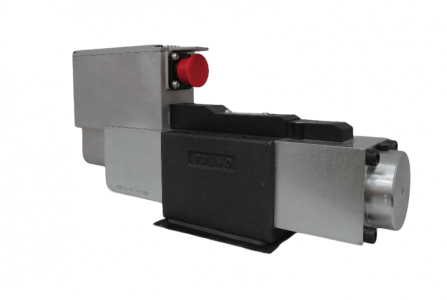

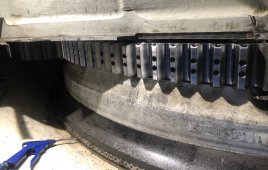
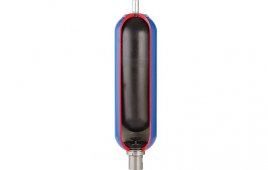

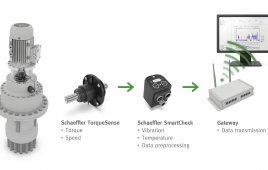
Thanks for sharing this article. Extremely informative . Do such pitch control valves also need periodic lubrication for its performance to be satisfactory?
Fully agree, I somehow am certain that Hydraulic Pitch system is suitable for the people generation where Hydraulics maintenance importance is well understood and skills are mastered. This can not be taken as easy going like other mechanical systems repair. In fact in the People education & training, the importance given to Hydraulic Engg is very much less compared to other facets of Engineering. I some how am certain that the skill imparting should be for selected people who can sustain, having patience, follow the few basic principles of attention needed in Hydraulic maintenance, including the cleanliness brought back, whenever the assemblies are opened, dismantled / repaired or small parts replaced. It is also true no way, compromise can be made for not having the right part or matching tools , ingredients like sealants when they are not readily available at site on top of the WTG. Some may not agree with me when I totally vetoed the selection of Hydraulic Pitch system for a 2 Mw new design choice, coming from India and insisted for Electrical pitch system to go with.